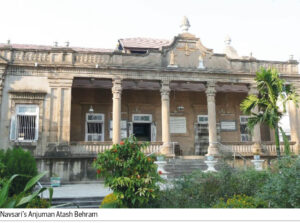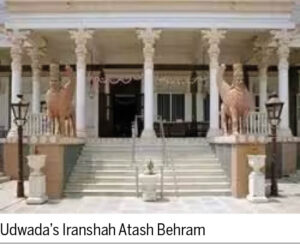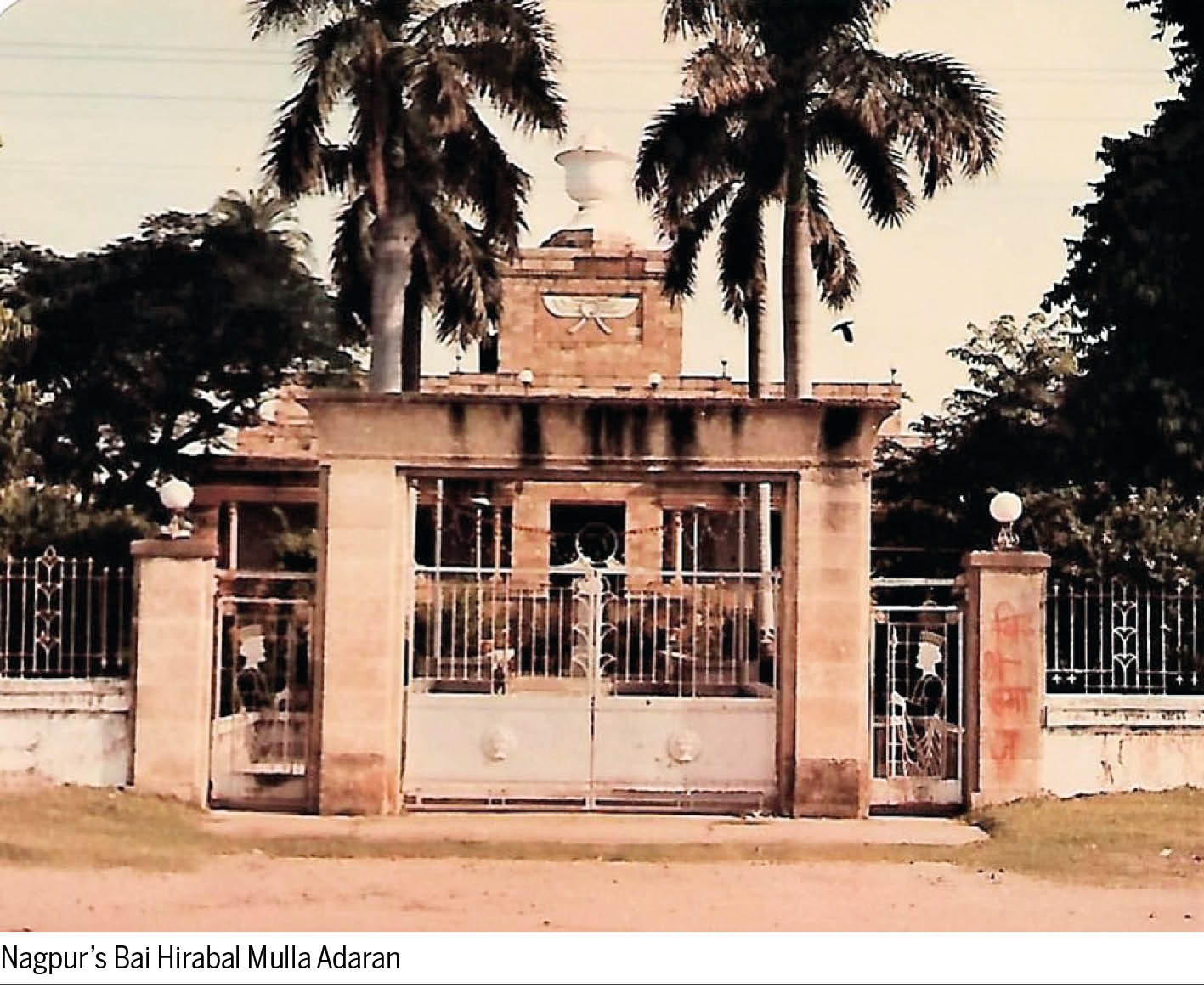Parsi Times presents a 4-part series by Adil J. Govadia, which explains the different grades of our Holy Fires and their crucial importance in our religion and our lives.
 (Recap: For almost 12 years, through many intrusions and invasions, the Iranshah Fire was kept safely in the Bahrot caves, for 14 years. In 1419 CE, the Fire was shifted to Navsari by Sanjana priests, where it stayed for almost 320 years. Owing to disputes between the Bhagaria and Sanjana priests, Iranshah was shifted to Udwada via Valsad, where it continues to radiate in full glory, since 1742 CE.)
(Recap: For almost 12 years, through many intrusions and invasions, the Iranshah Fire was kept safely in the Bahrot caves, for 14 years. In 1419 CE, the Fire was shifted to Navsari by Sanjana priests, where it stayed for almost 320 years. Owing to disputes between the Bhagaria and Sanjana priests, Iranshah was shifted to Udwada via Valsad, where it continues to radiate in full glory, since 1742 CE.)
With Navsari now deprived of their holy Iranshah fire, the Bhagaria priests eventually consecrated their own Atash Behram in 1765, at the very place where Iranshah was previously housed. Later, in 1925, the present grand structure was erected to house the Atash Behram in Navsari.
Similarly, in 1783, Surat’s Dadyseth family established an Atash Behram in erstwhile Bombay, while the descendants of the Banaji family, who relocated to Bombay from Surat in 1835, founded the ‘Kadimi Banaji Atash Behram’. Likewise, in 1830, Seth Ardeshir Hormasjee Wadia co-founded the ‘Hormasjee Bomanjee Wadia Atash Behram’ in Bombay, with his brothers. In 1897, the foundation stone-laying ceremony of the fourth and the last Atash Behram in Mumbai – ‘Zarthosti Anjuman Atash Behram’ – was formally performed by Dastur Dr. Jamsapji Minocherji JamaspAsa. There are, in all, nine Atash Behrams in the world, of which eight are located in India and one in Iran. In India, four Atash Behrams are located in Mumbai, two in Surat and one each in Navsari and Udwada.
Atash Niyaish is the only litany recited by the Atash Behram Boiwallas before performing the Boi ceremony (striking of the bell). These Yozdathregar Boiwallas recite Atash Niyaish 43 times daily, spread over five Gehs (11 times in Havan Geh and 9, 7, 7 and 9 times, in the remaining four Gehs). This is part of an altar-service performed by the Boiwalla Mobeds in various symbolic steps, including formation of a throne for Padshah Saheb (Fire) on the Afarganyu (fire-urn), with the offering of Machi (sandalwood) and Boi (striking of a bell) to drive away evil thoughts, words and deeds, thereby announcing change of Geh (Ref. Dastur Dr. Firoze M. Kotwal and James Boyd’s ‘A Guide to Zoroastrian Religion’).
 Having covered the significance of sixteen fire energies and consecration process of an Atash Behram in the previous two write-ups, herein we will try to briefly understand the process of establishing and consecrating a new Atash Adaran, which is a comparatively simpler process. Four specific sources of fire – from the homes of Athravan (priest), Rathaeshtar (warrior), Vastryosh (peasant) and Hutokhsh (artisan) – are collected for the consecration of an Adaran Fire. Of these, fires which have endured most hardships, like the fire of blacksmiths or potters, are preferred over others. A total of eight Yozdathragar Mobeds purify each of these four estates by taking the ‘essence’ of respective fires on a perforated ladle bearing sandalwood. Essence thus taken, for three successive days and nights, with separate Yasna and Vendidad ceremonies is performed individually on all four sources of fires. On the fourth day, the four fires are amalgamated together and a Yasna service is performed over the accumulated single fire, before enthroning the Atash Adaran.
Having covered the significance of sixteen fire energies and consecration process of an Atash Behram in the previous two write-ups, herein we will try to briefly understand the process of establishing and consecrating a new Atash Adaran, which is a comparatively simpler process. Four specific sources of fire – from the homes of Athravan (priest), Rathaeshtar (warrior), Vastryosh (peasant) and Hutokhsh (artisan) – are collected for the consecration of an Adaran Fire. Of these, fires which have endured most hardships, like the fire of blacksmiths or potters, are preferred over others. A total of eight Yozdathragar Mobeds purify each of these four estates by taking the ‘essence’ of respective fires on a perforated ladle bearing sandalwood. Essence thus taken, for three successive days and nights, with separate Yasna and Vendidad ceremonies is performed individually on all four sources of fires. On the fourth day, the four fires are amalgamated together and a Yasna service is performed over the accumulated single fire, before enthroning the Atash Adaran.
Like the Atash Behram Fire, the Atash Adaran fire also evolves into a thriving, pulsating and living entity with the performance of extensive ritualistic and manthric ceremonies. After a month-long process of consecration, the Atash Adaran fire gets enthroned. Thereafter, the daily Boi ceremony necessarily has to be performed during every Geh change, by an ordained priest. However, unlike in the Atash Behram, only one Atash Niyaish litany is recited by the Boiwalla Mobeds in an Atash Adaran before every Geh-change.
The sanctification of the lower grade of fire – Atash Dadgah, is relatively a simpler method. It involves recital of one Yasna ceremony by two priests over a normal fire. In some instances, like in the case of Bangalore Dadgah, Vendidad ceremony was also performed during consecration, though not obligatory; nor is the striking of bell (Boi) in all five Gehs mandatory, though different Dadgahs adopt differing practices. Like the Dadgah at Delhi and Nargol is glorified by Boi ceremonies performed during all five Geh changes, whereas at Bangalore’s Dadgah, the striking of bell happens only thrice a day.
In absence of a priest, the Dadgah fire can be tended by a Behdin Pasban, but striking of the Boi necessarily has to be done only by a qualified Mobed (priest). The Hubli Dadgah, although diligently served by professional priests for the past several decades, is currently tended-to by a Parsi attendant in the absence of an officiating Mobed (priest). He however does not participate in Geh change ceremonies.
In places like Calicut, Lucknow and Allahabad, the religious institutions are mere Prayer Halls where a normal fire (unconsecrated) is lit by the laity as and when required. Sadly, there are some Adaran grade fires like in Kanpur that are ostensibly downgraded to Dadgah status due lack of religious preservation due to the absence of Mobeds.
